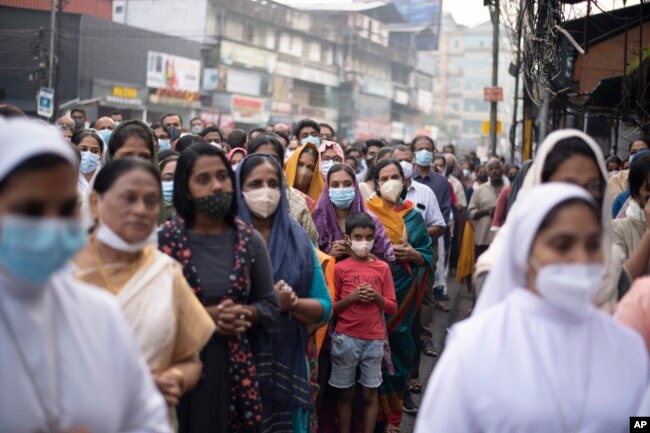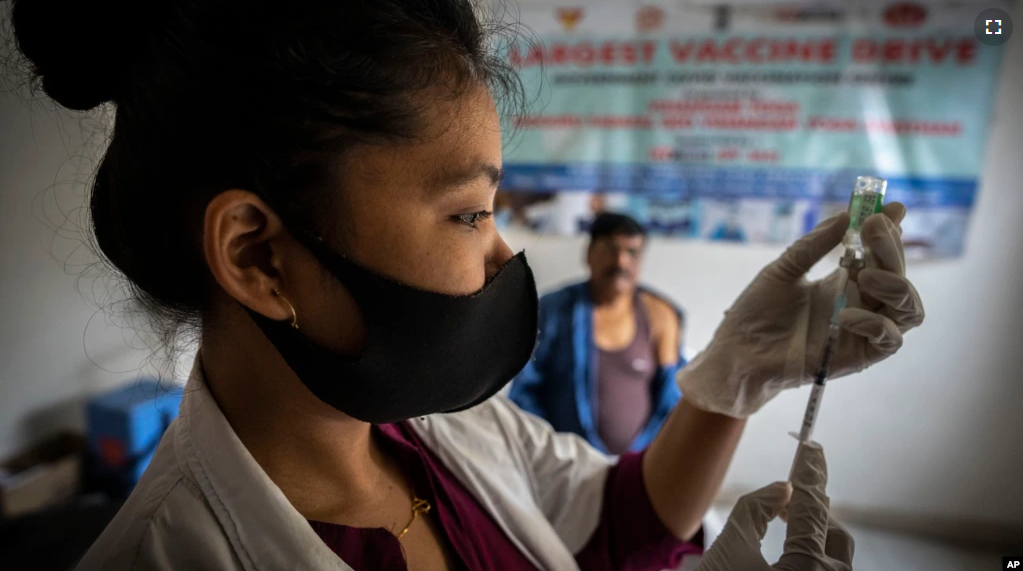A new mutation of the coronavirus is raising concerns after appearing in India and other nations.
Scientists say the mutation is genetically linked to Omicron, an earlier version, or variant, of the coronavirus. The new mutation, called BA.2.75., is being called a “subvariant” of Omicron.
Omicron and another coronavirus version, Delta, have spread widely across the world during the COVID-19 pandemic.
Researchers say they are studying the new subvariant to find out whether it might cause more serious disease than past Omicron versions.
“It’s still really early on for us to draw too many conclusions,” said infectious disease expert Matthew Binnicker. He is director of clinical virology at the Mayo Clinic in Rochester, Minnesota. Binnicker told The Associated Press that especially in India, the rates of infection with BA.2.75. appear to be showing an “exponential increase.”

The latest mutation has been found in several distant states in India. It appears to be spreading faster than other versions in those areas, said Lipi Thukral. She is a scientist at the Council of Scientific and Industrial Research-Institute of Genomics and Integrative Biology in New Delhi.
The subvariant has also appeared in about 10 other countries, including the United States, Australia, Germany, Britain and Canada.
Shishi Luo is the head of infectious diseases for Helix, a company that supplies viral sequencing information to the U.S. Centers for Disease Control and Prevention. She told the AP the fact that the latest mutation has already been discovered in many parts of the world — even with lower levels of viral surveillance — is an early sign that it is spreading.
Health experts are concerned about a large number of mutations that separate the new subvariant from older Omicron versions. Some of those mutations are in areas that could permit the virus to attach to cells more effectively, Binnicker said.
Another concern is that genetic differences may make it easier for the virus to get past antibodies produced in the body as a reaction to a vaccine or an infection from earlier versions.

But health officials still believe vaccines and booster shots are the best defense against severe COVID-19. Later this year, it is likely the U.S. will get new vaccine formulations to target more recent Omicron versions.
Disease experts say it may take several weeks to get a sense for how the latest Omicron subvariant may affect the direction of the pandemic.
Dr. Gagandeep Kang studies viruses at India’s Christian Medical College in Vellore. She told the AP the latest mutation demonstrates the need for continued efforts to closely follow viruses that combine genetic efforts with real world information about who is getting sick and how badly. “It is important that surveillance isn’t a start-stop strategy,” Kang said.
Helix’s Shishi Luo says BA.2.75 shows that the coronavirus is continuing to mutate and spread.
“We would like to return to pre-pandemic life, but we still need to be careful,” she said. “We need to accept that we’re now living with a higher level of risk than we used to.”
I’m Bryan Lynn.
The Associated Press reported this story. Bryan Lynn adapted the report for VOA Learning English.
________________________________________________________
Words in This Story
mutate – v. to cause a gene to change and create an unusual characteristic in a plant or animal
conclusion – n. the final part or result of something
exponential – adj. an intense increase in something
sequence – n. the order in which nucleotides (chemical substances) are combined to form DNA
surveillance – n. the careful watching of a person, place or situation
booster shot – n. an extra amount of a substance that is injected with a needle into a person or animal to help protect against a particular disease
formulation – n. the activity of creating or preparing something
strategy – n. a detailed plan for achieving success in situations such as war, politics, business, industry, etc.
